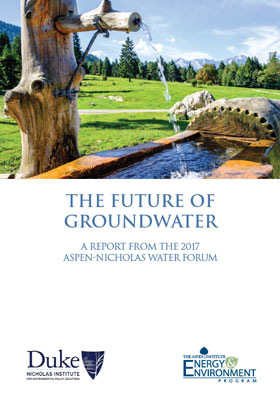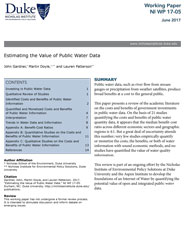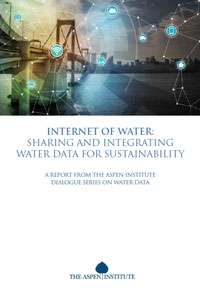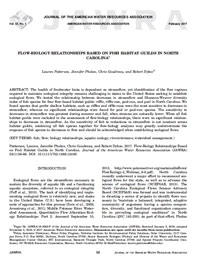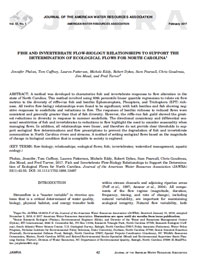Publications
A Nationwide Analysis of U.S. Army Corps of Engineers Reservoir Performance in Meeting Operational Targets
The U.S. Army Corps of Engineers operates reservoirs across the United States. Most (89 percent) of the reservoirs were constructed prior to 1980, and many have experienced changes in environmental conditions such as climate and sediment yield and societal conditions such as water and energy demand. These changes may challenge the potential for reservoirs to meet their operational targets and management goals. To identify the frequency and magnitude of departures from operational targets, this analysis published in the Journal of the American Water Resources Association collected Army Corps reservoir targets and historic daily reservoir data for 233 reservoirs. This work provides a framework to identify reservoir performance in relation to management goals, a necessary step for moving toward adaptive management under changing conditions. Individual reservoir analyses are accessible through an interactive data visualization tool. Companion research by the authors on Army Corps-operated reservoirs is presented in the report, Creating Data as a Service for U.S. Army Corps of Engineers Reservoirs.
The Future of Groundwater
The Future of Groundwater summarizes the Aspen-Nicholas Water Forum discussions of May-June 2017, offering various approaches to groundwater sustainability. A partnership between The Aspen Institute Energy and Environment Program and the Nicholas Institute for Environmental Policy Solutions at Duke University, the forum focused on exploring the present condition of groundwater, the evolution of that condition, and opportunities for transitioning to more sustainable uses of groundwater resources. The consensus was that groundwater needs to be sustainably developed, meaning groundwater use must be balanced among economic development, environmental health, and quality-of-life needs in a way that allows our children and grandchildren to enjoy.
Data and Modeling Infrastructure for National Integration of Ecosystem Services into Decision Making: Expert Summaries
Resource managers face increasingly complex decisions as they attempt to manage for the long-term sustainability and the health of natural resources. Incorporating ecosystem services into decision processes provides a means for increasing public engagement and generating more transparent consideration of tradeoffs that may help to garner participation and buy-in from communities and avoid unintended consequences. A 2015 White House memorandum from the Council on Environmental Quality, Office of Management and Budget, and Office of Science Technology and Policy acknowledged these benefits and asked all federal agencies to incorporate ecosystem services into their decision making. This working paper, expanded since its initial publication in November 2016, describes the ecological and social data and models available for quantifying the production and value of many ecosystem services across the United States. To achieve nationwide inclusion of ecosystem services, federal agencies will need to continue to build out and provide support for this essential informational infrastructure.
Estimating the Value of Public Water Data
Public water data, such as river flow from stream gauges or precipitation from weather satellites, produce broad benefits at a cost to the general public. This paper presents a review of the academic literature on the costs and benefits of government investments in public water data. On the basis of 21 studies quantifying the costs and benefits of public water quantity data, it appears that the median benefit-cost ratio across different economic sectors and geographic regions is 4:1. But a great deal of uncertainty attends this number; very few studies empirically quantify or monetize the costs, the benefits, or both of water information with sound economic methods, and no studies have quantified the value of water quality information. This review is part of an ongoing effort by the Nicholas Institute of Environmental Policy Solutions at Duke University and the Aspen Institute to develop the foundations of an Internet of Water by quantifying the potential value of open and integrated public water data.
Internet of Water: Sharing and Integrating Water Data for Sustainability
This report from the Aspen Institute Dialogue Series on Water Data lays out a vision for a national policy framework that addresses institutional barriers to increasing integration of water data and information to support sustainable water management. In the United States, data to manage water supplies and pursue innovative solutions to meet water management challenges are lacking or are not in a format that is easily accessible or understandable, and there are often strong disincentives, fears, and concerns about sharing the data. To address this challenge, the Aspen Institute Energy and Environment Program in partnership with the Nicholas Institute for Environmental Policy Solutions and Redstone Strategy Group convened the Aspen Institute Dialogue Series on Water Data. The report highlights the dialogue’s principle-based blueprint recommending a three-step plan to design and launch an “Internet of Water”—a network of interconnected data producers, hubs, and users—that will enable real-time collection and transmission of water-related data and information.
Unconventional Oil and Gas Spills: Risks, Mitigation Priorities and States Reporting Requirements
An analysis led by the Nicholas Institute for Environmental Policy Solutions, which appears in the journal Environmental Science & Technology, concludes that making state spill data more uniform and accessible could provide stakeholders with important information on where to target efforts for locating and preventing future spills. However, reporting requirements differ across states, requiring considerable effort to make the data usable for analysis. By examining state-level spill data, it finds that 2 to 16 percent of hydraulically fractured oil and gas wells across Colorado, New Mexico, North Dakota and Pennsylvania spill hydrocarbons, chemical-laden water, hydraulic fracturing fluids and other substances each year. The study characterizes spills associated with unconventional oil and gas development at 31,481 wells hydraulically fractured or "fracked" in the four states between 2005 and 2014, identifying 6,648 spills in the 10-year period.
Flow-Biology Relationships Based on Fish Habitat Guilds in North Carolina
The health of freshwater animal and plant life is dependent on streamflow, yet identification of the flow regimes required to maintain ecological integrity remains challenging to states in the U.S. seeking to establish ecological flows that achieve environmental objectives. A new article in the Journal of the American Water Resources Association tests the relationship between decreases in streamflow and Shannon-Weaver diversity index of fish species for four flow-based habitat guilds: riffle, riffle-run, pool-run, and pool in North Carolina. The study finds that species who prefer shallow habitats, such as riffles and riffle-runs were the most sensitive to decreases in streamflow, while using all fish data greatly underestimated the response of fish species to decreases in flow. Since ecological flows are designed to protect the integrity and diversity of aquatic ecosystems, ecological flows should be established to protect those species most sensitive to changes in flow.
Evaluating Flow Metric-Based Stream Classification Systems to Support the Determination of Ecological Flows in North Carolina
Streamflow is a main determinant of the ecological health of rivers and streams. Assignment of streams to classes is suggested as an initial step in the process of establishing ecological flow standards that ensure the appropriate environmental objectives are achieved. A new article in the Journal of the American Water Resources Association evaluated a hydrological model with two distinct hydroecological river classification systems of stream classes in North Carolina and found that stream classification was inconsistent between all three models and highly dependent on the period of record of the underlying data. Based on these results, it was surmised that classification systems based on streamflow metrics are not a reliable approach for guiding ecological flow determinations.
Fish and Invertebrate Flow-Biology Relationships to Support the Determination of Ecological Flows for North Carolina
Following recent droughts in North Carolina, the General Assembly convened an Ecological Flows Science Advisory Board to develop a strategy for establishing flow regimes that could protect the ecological integrity in the streams and rivers of North Carolina. A new article in the Journal of the American Water Resources Association describes the method developed to characterize fish and invertebrate responses to flow alterations in the state of North Carolina to aid in setting ecologically sensitive flows that achieve appropriate environmental objectives.
Unconventional Oil and Gas Spills: Materials, Volumes, and Risks to Surface Waters in Four States of the U.S.
A new article in the journal Science of the Total Environment examines spill data associated with unconventional oil and gas wells from Colorado, New Mexico, North Dakota, and Pennsylvania from 2005 to 2014. The authors used the data to evaluate the environmental risk of spills. They found that there were 21,300 unconventional wells and 6,622 reported spills. Across all states, the average distance of spills to a stream was highest in New Mexico, followed by Colorado, North Dakota, and Pennsylvania. Pennsylvania spills occurred in watersheds with a higher relative importance to drinking water than the other three states.


